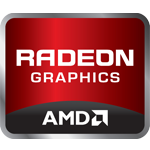You cannot always win. After a lot of true news about Zen (we were the first to talk about Zen, about the new high performance cache, about the use of SMT, etc.) and other products, one of our sources was fooled by AMD. Some weeks ago, he told me that the 390X will be a 8GB card, and we thought that it was Fiji (8GB of HBM). Now we know that the 390X is an Hawaii card, and we know that Fiji cards will have an unusual name. Here it is our wrong news. Well done AMD. You have kept hidden the fact until the last moment.

The 390X will be an Hawaii XT card with 8GB of GDDR5, as WCCFTect reports, and it will have more VRAM than the first incarnation of Fiji (4GB of HBM), as Joel from ExtremeTech said. Joe Macri, CTO of AMD, recently confirmed this statement: "You're not limited in this world to any number of stacks, but from a capacity point of view, this generation-one HBM, each DRAM is a two-gigabit DRAM, so yeah, if you have four stacks you're limited to four gigabytes. You could build things with more stacks, you could build things with less stacks. Capacity of the frame buffer is just one of our concerns. There are many things you can do to utilise that capacity better. So if you have four stacks you're limited to four [gigabytes], but we don't really view that as a performance limitation from an AMD perspective. If you actually look at frame buffers and how efficient they are and how efficient the drivers are at managing capacities across the resolutions, you'll find that there's a lot that can be done. We do not see 4GB as a limitation that would cause performance bottlenecks. We just need to do a better job managing the capacities. We were getting free capacity, because with [GDDR5] in order to get more bandwidth we needed to make the memory system wider, so the capacities were increasing. As engineers, we always focus on where the bottleneck is. If you're getting capacity, you don't put as much effort into better utilising that capacity. 4GB is more than sufficient. We've had to go do a little bit of investment in order to better utilise the frame buffer, but we're not really seeing a frame buffer capacity [problem]. You'll be blown away by how much [capacity] is wasted".
However, hope is the last to die, because of the Dual Link Interposer is in development. An 8GB version of Fiji is still possible.
